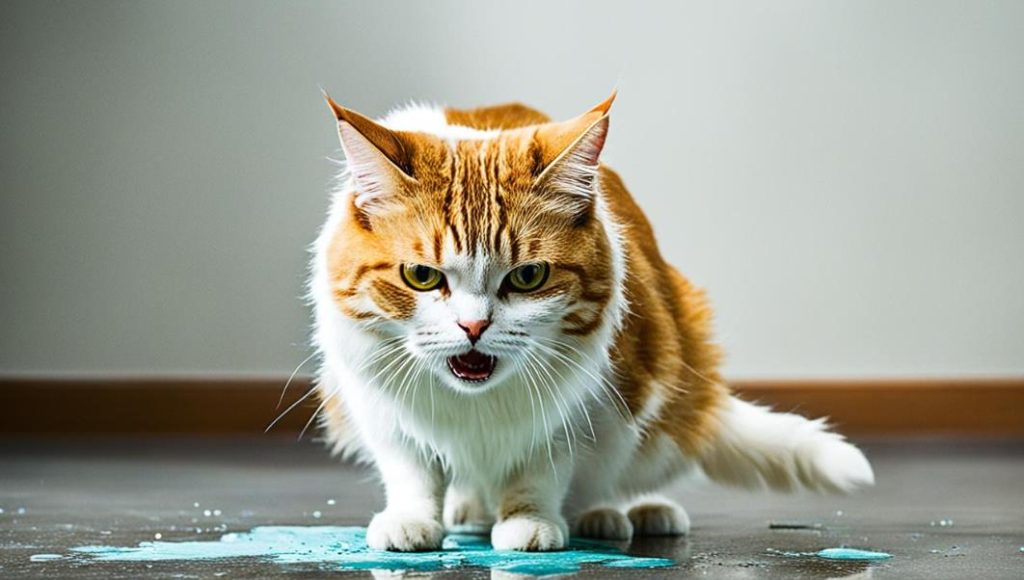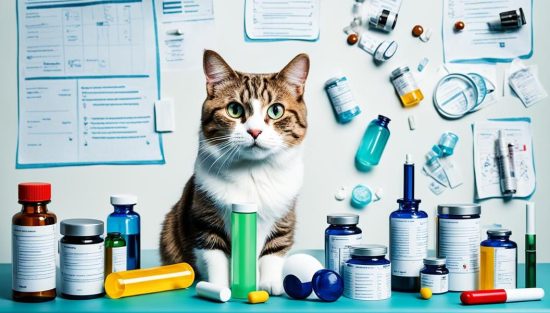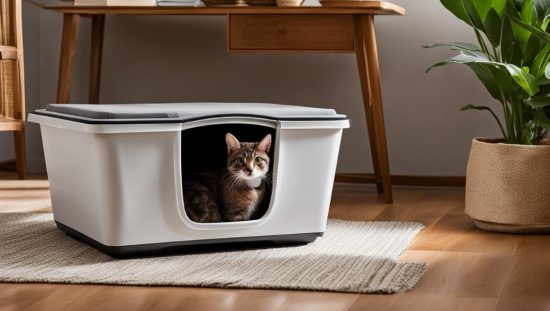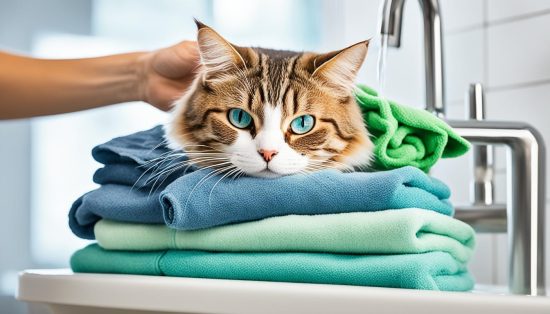How to Get a Cat to Stop Peeing? Stop Litter Box Issues
How to get a cat to stop inappropriate peeing: Address medical issues, clean spots thoroughly, make litter boxes appealing, and reduce stress.

Did you know that inappropriate urination is the leading cause of feline surrenders to shelters? With dedication and the right approach, you can rehabilitate your cat’s unwanted peeing behavior and restore harmony in your home. Whether your cat is having trouble using the litter box or peeing excessively, there are helpful ways to address the issue and get them back on track.
Nothing is more frustrating for cat owners than dealing with inappropriate urination. Once you’ve ruled out any medical causes with your veterinarian, the next step is to identify the environmental factors that are triggering your cat’s unwanted behavior. With patience and the right techniques, you can stop inappropriate peeing and ensure your cat is happy and comfortable in their own home.In this blog, let’s look into how to get a cat to stop peeing.
Cats can sometimes have trouble peeing in their litter box or pee a lot, which can be frustrating for cat owners when the cat lives in their house. There are helpful ways to stop inappropriate behaviors associated with peeing. It’s important to understand why your cat is peeing inappropriately in order to solve the problem.
Identifying the Causes of Inappropriate Peeing
Your cat’s peeing issue may be because of a health problem. Talk with your vet if you’re concerned about your cat’s health. They may want to look at your cat and take a urine sample. Once your vet has completed tests on the sample, they will have an idea of the best treatment. Your cat may get urinary problems due to any of the following conditions: urinary tract infection, metabolic disease like kidney disease or diabetes, bladder stones, or feline lower urinary tract disease. Any medical condition that interferes with a cat’s normal urination or defecation behavior can cause litter box problems.
Litter Box Aversions
An aversion to the litter box can also lead to house soiling. It could be the box, the litter, the location of the box, or all three that your cat finds unsavory. A cat with an aversion to her litter box will usually eliminate on a variety of surfaces. You may find puddles of urine or feces on soft surfaces like carpets, beds, or clothing, or on hard surfaces like tile floors or bathtubs. Depending on how much your cat wants to avoid the litter box, he may continue to use it, but only inconsistently. Cats are generally sensitive and specific about their toilets, and when the litter box is too dirty for your cat to pee, they will prefer to do it somewhere else.
Stress and Environmental Changes
Your cat may urinate inappropriately because of stress. They may be marking their territory or they may be unhappy with another animal in your house. Cats are sensitive to changes in their space. Significant life changes like introducing a new cat, getting married, having a baby, or moving to a new home can all be stressful for cats and lead to inappropriate urination. Your cat may also pee outside the litter box if another pet is stalking them or bothering them while they are in the box.

How to Get a Cat to Stop Peeing?
Cleaning any places where your cat has peed inappropriately is crucial. You need to use an enzymatic cleaner that will neutralize the odor, as cats will re-soil areas they have marked with their scent. Cleaning is most effective when it’s done soon after an item was soiled, and odors must be neutralized, not just deodorized, to escape a cat’s keen sense of smell. Avoid cleaning products containing ammonia or vinegar as they smell like urine and can be irritating.
Cleaning and Odor Elimination
Make sure your cat’s litter box is clean and appealing to them. Cats are very specific about their toilets, and when the litter box is too dirty, they will prefer to go elsewhere. You should clean the litter box daily at a minimum. Provide at least one more litter box than the number of cats in your household. Cats often prefer unscented clumping litter. Try different types of litter and litter boxes to see what your cat likes best – some prefer softer litters or uncovered boxes.
Litter Box Management
In addition to cleaning and litter box management, you can make environmental changes to discourage inappropriate peeing. Try placing double-sided tape, aluminum foil, or citrus scents in areas your cat has previously urinated to make those spots less appealing. You can also try placing food and treats near where your cat has peed, as cats tend to avoid eliminating near their eating and sleeping areas. Gradually moving a litter box to a cat’s preferred spot can also help retrain them to use it. Providing more vertical scratching posts, cat trees, and play time can also help reduce stress and territorial marking.

Preventing Urine Spraying
Urine spraying is a normal territorial marking behavior for cats, but it can be frustrating for owners. Cats usually spray on vertical surfaces, lifting their tail and quivering as they deposit small amounts of urine. Cats may spray when they perceive a threat to their territory, such as a new cat in the home or outdoor cats nearby. Spraying can also be a response to stress or frustration, like changes in the home environment or insufficient playtime. It’s important to distinguish spraying from other forms of house soiling.
Territorial Marking Behavior
Cats are highly territorial animals, and urine spraying is one way they mark their space. Spraying is often a response to a perceived threat, such as the presence of a new pet or person in the home. Cats may also spray in response to changes in their environment, like a move or the arrival of a new piece of furniture. Understanding the drivers behind your cat’s spraying behavior is the first step in addressing the issue.
Managing Stress and Anxiety
Since stress and anxiety can be major drivers of urine spraying and other inappropriate elimination, it’s important to address these issues. Providing your cat with more environmental enrichment, playtime, and affection can help reduce their stress levels. Using calming supplements like Zylkene or pheromone diffusers like Feliway can also have a soothing effect. Making sure your cat has a quiet, secure space and doesn’t feel threatened by other pets or people in the home are also key to preventing spraying.
Seeking Professional Help
If you have ruled out medical causes but are still struggling with your cat’s inappropriate urination, it may be time to consult a veterinarian. Your veterinarian can provide guidance on potential medications or supplements to reduce anxiety and stress. For persistent behavioral issues, working with a veterinary behaviorist or certified cat trainer can be extremely helpful in identifying the root causes and developing an effective treatment plan. Their expertise can be invaluable in getting your cat’s litter box habits back on track.
Creating a Positive Reinforcement Program
In addition to making environmental changes and seeking professional help if needed, you can also implement a positive reinforcement program to encourage your cat to use the litter box. This involves rewarding your cat with treats, praise, or playtime whenever they use the litter box appropriately. By using rewards to encourage litter box use, you can help your cat develop a positive association with the desired behavior.
You may need to start by placing the litter box in a preferred location and gradually move it back to the desired spot while consistently rewarding use. Techniques for retraining cats may require patience and consistency, as it can take time for your cat to overcome inappropriate elimination habits. The key is to be persistent and provide positive reinforcement every time your cat uses the litter box correctly.
With the right approach, you can help your cat overcome inappropriate elimination and restore harmony in your home. Patience and consistency are essential when implementing a positive reinforcement program, as cats can be slow to change their behaviors. By taking the time to retrain your cat using rewards, you can effectively encourage them to use the litter box and prevent future incidents of inappropriate peeing.
FAQs on getting a cat to stop peeing
How do I get my cat to stop peeing everywhere?
Once you’ve ruled out any medical reasons with your veterinarian, you can try various techniques to stop your cat’s inappropriate peeing behavior, such as cleaning up odors, managing the litter box, making environmental modifications, and using positive reinforcement.
What scent will keep cats from peeing?
Cats tend to avoid areas with citrus scents, so you can try placing double-sided tape, aluminum foil, or citrus-scented products in areas where your cat has previously urinated to make those spots less appealing.
How do I make sure my cat doesn’t pee?
In addition to cleaning and litter box management, you can also provide more vertical scratching posts, cat trees, and playtime to reduce your cat’s stress and territorial marking. Seeking professional help from a veterinarian or certified cat trainer can also be beneficial if the issue persists.
How do you stop a cat peeing behavior?
To stop a cat’s inappropriate peeing behavior, you need first to identify the underlying cause, whether it’s a medical condition, litter box aversion, or stress. Then, you can combine cleaning, litter box management, environmental modifications, and positive reinforcement to retrain your cat to use the litter box consistently.
Why is my cat peeing everywhere?
There are several possible reasons why a cat may be peeing outside the litter box, including medical issues, litter box aversions, and stress or anxiety caused by changes in the home environment. It’s important to work with your veterinarian to rule out any underlying health problems and then address the behavioral factors contributing to the inappropriate urination.






